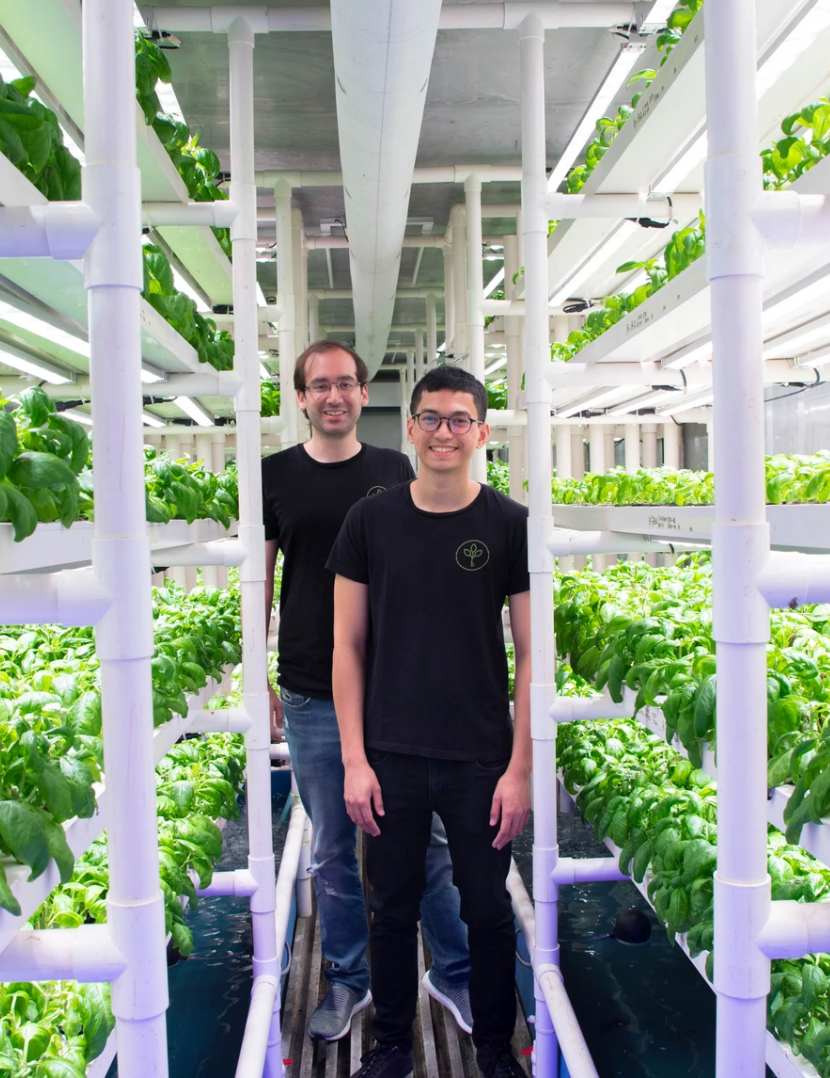According to Future Fresh, hydroponically grown produce may be a safer and fresher version of traditionally farmed vegetables.
Before it reaches the end customer, at least 10 pairs of hands touch produce when sourced from many farms. That’s due to the harvests traveling hundreds of kilometers from provincial farms to urban cities. In terms of food safety, it’s something to think about, especially while living through a pandemic.
“We want to prevent that. For us, your product really touches two pairs of hands. The packaging and the rider. And it’s always delivered right on that same day,” says Future Fresh co-founder Derya Tanghe.
Future Fresh is one of the country’s foremost retailers of hydroponically grown produce. In a nutshell, hydroponics is a bio-secure system that grows plants without soil. Depending on the system’s capabilities, urban farmers can control elements such as light exposure and temperature.
With the ability to manage such elements, hydroponic methods can cultivate the quality of the plants like it’s grown in their geographical origin. Tanghe shares that you can find out the best harvest seasons of, say, Italy’s Genovese Basil with hydroponic systems. Then they can mimic the ideal growing climate in indoor farms.
“Seasonality doesn’t really affect us, which is great, and at the same time, we can completely plant and grow completely out of season,” he explains. “You can match the best harvest seasons globally, inside a controlled environment if you’re good enough.”

With the popularity of quarantine-induced hobbies such as home gardening and cooking our own meals, hydroponically grown produce comes off as beneficial, safe, and just as nutritious as traditionally grown vegetables.
More sustainable
Future Fresh’s indoor farms can quickly reach Metro Manila’s grocery stores, restaurants, and homes because their farms are in Quezon City and Taguig. In effect, consumers get their greens on the same day as it’s harvested, resulting in produce that lasts for weeks instead of just days. Other than fresher produce, a shorter travel distance from farms to the end-consumer also means less carbon dioxide emissions from vehicles.
They say they can grow the same kilogram of produce as traditional farms, but with less than five percent of water traditionally used in farming by recycling it through the system.
The soilless cultivation also minimized the need for harsh chemicals usually used to fertilize the soil. However, Future Fresh does use what they call a “nutrient mix.” It’s a vital fertilizer used to ensure the hydroponically grown plants are the same as produce grown in traditional farms.
Just as nutritious
“If we just talk about hydroponics, there shouldn’t be a fear of it being an inferior product when it comes to the way that it tastes and grows,” says Taghe. “It’s not like on the ground where you can’t control how things are distributed. Here, you can really fine-tune the amount [of nutrients] each plant is getting, the kind of flow rate, and there’s so much more you can control.”
He adds that its organic and pesticide-free quality can even surpass traditional produce.
However, there are limitations in what you can grow hydroponically. With the system eradicating the use of soil, the method can’t cultivate root crops that grow in-ground such as potatoes, beets, and carrots. And because operating a system like this on a large scale is more costly, Taghe says they don’t grow simpler products like cabbage.
Future Fresh focuses on growing the “best of produce” of what usually needs to be imported to the local market. The product range includes Oakleaf Salanova Lettuce, Roquette Arugula, Savoy Spinach, and Baby Kale.
In a time when we have to look after not only our health but the well-being of our planet, hydroponically grown produce might be the future for more sustainable agriculture industry. We can hope that importing foreign produce can be minimized in the coming years, and food safety will be maximized as hydroponic systems advance.
Banner photo from @gofuturefresh on Instagram.





